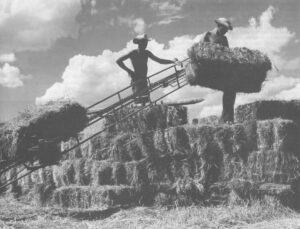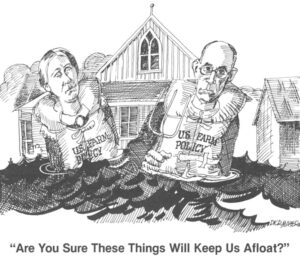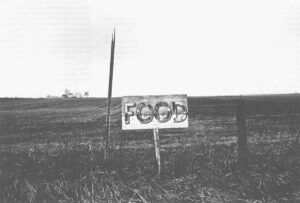“It is the upper-crust of farmers who are running the show,” says the frail, slowly speaking man, 83 years old, a scarf at his throat to protect against a chill, a cane by the door to help him walk. He is Dr. Paul S. Taylor, a storied man in this country among those concerned with questions of land, water, and agriculture. For 50 years, this man, chatting now at his desk in Barrows Hall on the campus of the University of California at Berkeley, has devoted himself to these matters, and he is talking about them now, farming in America and, specifically, a matter that seems almost to have consumed him, the question of Western water and what is called the 160-acre limitation.
In 1902, when Congress passed the federal reclamation act, it stipulated that no farm irrigated with water from a federal irrigation project could exceed 160 acres-that old, fabled land measure of the Homestead Act. For Dr. Taylor, who has traveled this country, studying sharecroppers, migrant workers, men and women made landless by the Depression, by new machinery, by concentration in agriculture, the 160-acre question boils down to a simple matter. “It is,” he says, “the age-old battle of who is to cash in on the unearned increment from a public investment.” It is, he says, a matter of money.
Water. Central to farming. Central to agriculture as we have come to practice it in America. Agriculture is the largest water user in the United States. Of the nation’s 460 million acres of croplands, only 42 million acres, nine percent, are irrigated. Yet, of the 338 billion gallons of water pumped from the nation’s streams, rivers, reservoirs, and underground lakes- these have the unwieldy name of aquifers-each day, 156 billion gallons, 46 percent, go for irrigation. Of the water depleted in the United States each year, agriculture accounts for more than 80 percent.
Moreover, billions of dollars in public money have been spent, largely in the Great Plains and the West, to construct dams and aqueducts to irrigate and lands and to allow for the construction of cities. Concrete canals line states like California and Arizona like veins in a drunkard’s nose.
Many crops that the nation depends upon, alfalfa, cotton, and many specialty crops grapes, oranges, tomatoes, avocados, are grown in California and Arizona under irrigation. Most lettuce that the nation eats in the winter comes from irrigated lands in California’s Imperial Valley, across from the Mexican border. Think of that: all that money, billions of dollars, all those miles of aqueducts, for a lettuce salad, limp, tasteless, as inviting as a cow’s cud, in a long, narrow restaurant in New York.
Now, as a result of new irrigation technology, another irrigation method, pivot irrigation, is being put in place in many areas of the Middle West, the Great Plains, the Far West. Each of these systems, a quarter mile long sprinkler pipe resting on metal or rubber wheels and utilizing water from a well at the pivot point or brought in through a conventional irrigation system, irrigates the greater part of a quarter section of land. (Because the corners of a 160-acre section, a square, cannot be reached by the system, which dispenses water in a circle, only 133 of each 160-acre section can be irrigated.)
A center-pivot irrigation system

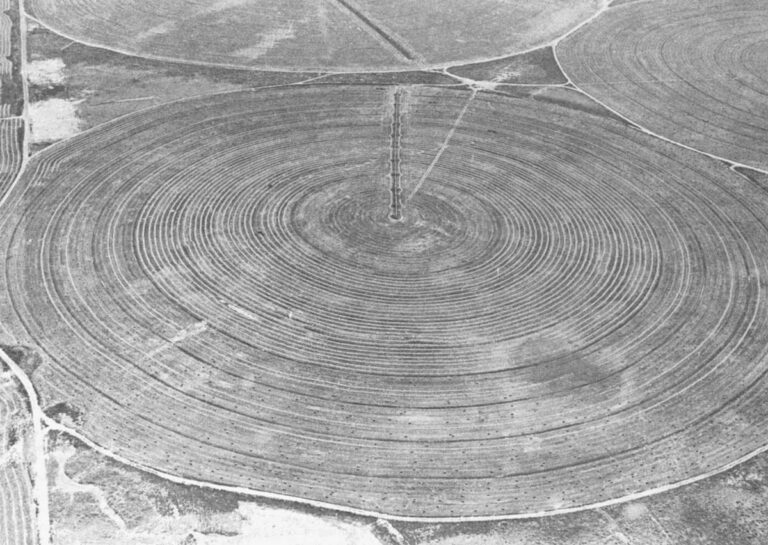
Powered by electricity or perhaps a diesel engine, the sprinkler pipe is rotated around the pivot like the hand of a clock. The systems can dispense water from 180 feet below the ground at a rate of 900 gallons per hour. The systems simply alter the climate of the lands they water, turning and lands into temperate-zone lands. The large green circles, like poker chips, can be seen by airline passengers and have been observed by astronauts in space.
The systems are expensive, costing perhaps $60,000 for a well and installation of the pivot system. They consume a great deal of energy, which is increasingly costly. But many farmers and farmland investors, often-wealthy individuals or corporations, love them. They are the newest farmland fad, a sort of Jacuzzi or hot tub for the rural well to do or farm investors.
The machines are used by Indiana, Illinois and Minnesota farmers even though those regions often have adequate rainfall. They are insurance-to be used if the rainfall does not meet crop needs. The systems have extended the corn belt and feedlot operations onto the plains of Nebraska and Colorado. The machines, often financed by large outside investors, have made possible annual wheat crops in the Columbia River valley in Oregon and Washington, where, because of low-rainfall, farmers had been limited, under dry-farming practices, to a crop every other year. A number of foreign nations also are installing the systems. Scientific American calls the machines perhaps the most significant mechanical innovation in agriculture since the tractor. 1
The 1902 Newlands Reclamation Act (it was fathered by Rep. Francis G. Newlands, of Nevada, an attorney and silver-fortune heir, who believed that irrigation was the only way to assist Nevada’s declining population) was passed, it was said, to provide homes and farmsteads for average Americans. Newlands wrote in a letter in 1904 that the goal was “the reservation of the public lands for actual settlers and homemakers; the prevention of monopoly.” Thus, the 160-acre limitation (Newlands had wanted an 80-acre limitation; the figure was increased in a compromise with Western interests).
Such a splendid picture. Well-kept homes would dot the desert, which would no longer be arid lands, but a garden. Proud fathers would sit in rockers on the porches, gazing over their orchards and corn. Mothers would can in the kitchen. Children would play ring-toss or crack-the-whip in the yard. Winslow Homer could paint it. Or Grandma Moses.
But, happy homes have been used to justify a lot of things in this country, the Homestead Act, the reclamation law, urban renewal. A New York Congressman thought he detected other forces at work. In the debate on the Newlands Act, he said that behind “this scheme, egging it on … (are) the great railroad interests of the West, who own millions of acres of these and lands, now useless, and the very moment that we, at the public expense establish or construct these irrigation works and reservoirs, you will find multiplied by 10, and in some instances by 20, the value of the new worthless lands.” Railroad interests, yes. The Southern Pacific Railroad is still an owner of vast California farmlands. But other interests too-individual speculators, Eastern investors, land companies. 2
Today, the Bureau of Reclamation operates 174 reclamation projects that serve some 9.3 million acres. It is estimated that in California nearly 800,000 acres are receiving illegal water, and that in the 17 Western states covered by reclamation law, 2.3 million acres would have to be sold if the 160-acre limitation were enforced.
Secretary of Interior Cecil D. Andrus, prompted by court action, has proposed that enforcement of the law be strengthened. He would limit families to 960 acres and, under a provision of the 1902 law that says that reclamation farmers must live “in the neighborhood” of their farms, would require that farmers live within 50 miles of their lands. The matter has been the subject of court action, and now waits issuance of an environmental impact statement, scheduled for later in 1979. President Carter has indicated he sympathizes with farmers on land receiving water from federal projects. Moreover, taking someone off his land, unless, say, you are constructing an expressway or are some private interest or a company consolidating farmlands, is alien to what are regarded as basic American notions.
Water problems do not stop with enforcement of an old law or with politics. For example, only so much water comes down the Colorado River-about 14 million acre feet 3 a year, in recent years-and the cities of the Southwest, Los Angeles, San Diego, Phoenix, Tucson, plus the irrigation projects, are consuming water as though there will be no tomorrow-which might be the case, if the water consumption continues, at least for life as people in the Southwest have come to know it. Already claims on the Colorado River exceed its flow. Phoenix and Tucson have pumped enormous quantities of water from their underground reservoirs. Water that underlies these communities has dropped several feet a year in places. Arizona wishes to continue construction of the controversial, multi-million dollar Central Arizona Project, which would transport water from Lake Havasu, behind Parker Dam, to the Phoenix-Tucson area-more federal water to allow construction of more homes, office buildings, golf courses, expressways.
The problem exists in other places as well. The massive Ogalalla aquifer, which underlies the Great Plains from Nebraska through Colorado and into Oklahoma and Texas, is being pumped by thousands of irrigation wells, a situation abetted by the coming of pivot irrigation. In some places in Texas, the water table is lowered seven feet a year, sometimes more. There are fears in the Columbia River basin, too, of lowered water levels; the water table there has dropped 40 feet a year in some areas. Ground water in some Columbia River areas, it is said, may run out in twenty years.
An additional problem is this: salts. Evaporation of water in the West’s massive reservoirs concentrates salts in the remaining water. These concentrated salts are then laid down upon farmlands, destroying the fertility that made the lands attractive in the first place. The Colorado River and other Southwest rivers are heavy with salts: The Bureau of Reclamation has planned a technological solution to this, a huge desalination plant to purify these waters-at enormous costs.
The rub is that as people rely on these technological marvels, the dams, the aqueducts, the irrigation machines, they come to enjoy the life the wonders bring and expect that life to continue. Fantastic schemes, ideas seemingly hatched by relentless futurists, a Jules Verne, a Herman Kahn, have been bandied about-not in jest-to continue agriculture and settlement as we have come to know it on the Great Plains and in the West. People talk of transporting water from the Yukon River or the Columbia River to the Great Plains. They talk of sending water from the Mississippi River west to Texas. Scientists explore methods of recharging ground water, so the massive pumping can continue. There is talk of weather modification.
Finally, while the government, as it has done for five decades, pays farmers to take land out of production, work continues, often abetted by government subsidies, to put land in production. As this is done, at the costs of billions of dollars, cities across America continue to expand mindlessly onto farmlands, lands that this is what attracted settlers there-often are the most fertile the nation possesses.
When white men first reached the West in substantial numbers, they began to concoct irrigation schemes. It was first thought that plowing the land would bring rain. That did not work. Then the Mormons, clambering out of the Wasatch Range, constructed a successful irrigation system. People did not like the Mormon’s strange habits, but that irrigation system, that was something.
In 1871, John Wesley Powell, a one armed veteran of Shiloh, a scientist and explorer, issued his famous report on the West’s arid lands. The lands, he said, had “no value without water.” Powell wanted the West settled by irrigation district, but wanted settlers to build the systems themselves. “Furnish the people with institutions of justice,” he said, “and let them do the work…”
In the 1880s and 1890s, some private irrigation systems were attempted by private companies. The plans failed. The West looked to the federal government for assistance. An irrigation movement-this movement gave rise to the nation’s conservation movement-was begun. Then, in 1902, Representative Newlands, the efforts supported by President Roosevelt, who championed the idea of efficient utilization of resources, saying this was his movement, was able to push his irrigation law through Congress.
Things went slowly. Only California, it seemed, had a plan. The other states feared California would hog the water. Then, in 1902, Herbert Hoover, an engineer, worked out the Colorado River compact. This divided the Colorado River into two parts, one above and one below Lee’s Ferry in northern New Mexico. Work could begin on the lower part, Hoover reasoned, while plans for the upper part were worked out. The Boulder Canyon Project Act was passed in 1928, and during the Depression, when government-sponsored projects seemed a splendid way of putting people to work and getting the economy moving, construction of large dam and irrigation projects began one after the other. Work began on the Hoover Dam in 1931 and on the Parker Dam and the Colorado Aqueduct (this carried Colorado River water to the Los Angeles area) and on the Imperial Dam and the All-American Canal (this transports Colorado River water to the Imperial and Coachella Valleys) in 1934. All were finished by the early 1940s. California, seeming insatiable, began work on other massive irrigation projects, the Central Valley Project, to irrigate the huge San Joaquin Valley in Central California, and, later the California Water Project, to bring northern California water to Los Angeles and other parts of southern California.
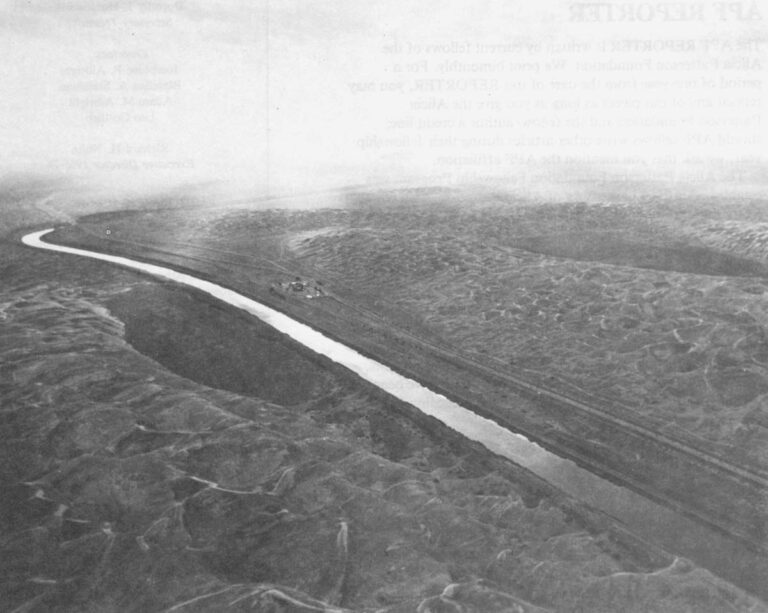
Meantime, along the Columbia River, along the Missouri River, along the Platte River, other dam and irrigation projects were constructed: Grand Coulee Dam and Bonneville Dam along the Columbia River; six major dams, including Fort Randall and Fort Peck, along the Missouri River, many diversions of the Platte River, that had guided settlers West a century before.
What a time to be an engineer, a builder. “Henry, it sounds a little ambitious!” W.A. (Dad) Bechtel, the contractor, said to be as tough as a Fresno scraper, remarked to Henry J. Kaiser, the sand, gravel, and concrete man, as the two discussed Hoover Dam, the key to controlling the Colorado River. It was that, yes, but Americans always have been wonderful builders. So the dam was built. It cost $49 million, and the Six Companies, the consortium that built it, earned a handsome $10 million. One hundred ten men lost their lives. Six companies went on to construct Bonneville Dam and to complete Grand Coulee Dam. “There’s something peculiarly satisfying about building a great dam,” Frank Crowe, another Six Companies man, said. “You know that what you build will last for centuries.
But only so many dams, so many canals, can be constructed. In the mid-1940s, almost in the nick of time, it seems, a Colorado farmer, Frank Zybach, in the tradition of American tinkering, concocted the first center-pivot irrigation system. The first commercial model was placed on the market in 1953. The devices spread slowly, then picked up speed, especially in the early 1970s, when foreign grain sales helped increase the nation’s farm and food prices.
Today, opposition may be fierce to some huge reclamation projects, like, say, the $565,000,000 Garrison diversion projects, in North Dakota, that would flood some 220,000 acres of open lands to irrigate 250,000 acres of farmlands. But irrigation continues to spread, the pivot systems an extension of the older dam and canal systems. Nebraska alone is said to have more than 9,000 pivot systems, and the number increases each year, even, says Donald Ralston, co-director of the Center for Rural Affairs, in Walthill, Nebraska, when farm income is said not to be particularly high.

In a study of the systems, “Wheels of Fortune, ” the Center for Rural Affairs says that, as a result of pivot irrigation, areas in Nebraska, “once limited to breeding (of) livestock are suddenly sporting grain elevators and feedlots.” In the Columbia River basin, tens of thousands of acres are being irrigated, with large investors spending perhaps $1,500 an acre for development. The systems, Ralston says, are a proven technology. And, to those who can afford them, generally non-farm investors, they almost guarantee increased production and strong returns.
Concrete. Inventiveness. Profits. How American. Workmen descending 750 feet into black, vertical-sided Boulder Canyon to stop a roaring river. Men building an 85-mile long bed of concrete, the All-American canal, to transform that inferno, the Imperial Valley, into a truck garden for housewives in New York and New Jersey. A Colorado man inventing an irrigation machine, a device that spins itself through fields of wheat or corn, ascending 30-degree slopes with ease, a device as unthinkable, a hundred years ago, as a flying machine.
This is what we always have done, used our inventiveness, our technology, to subordinate the land to our uses-filling harbors, slicing off hills, filling valleys, diverting rivers, cutting forests, draining swamps, plowing dry plains.
Years ago, Dr. Taylor, writing in Harper’s Magazine on farm tractors, then coming into extensive use in the Corn Belt, said, “The real question is not: Are we for or against more farm machines? It is: How can we distribute the benefits that more machines in agriculture can confer?”
That remains the point, that and this question: When do we stop with our concrete, our machines, our devices? When do we leave things alone?
We talk of family farms. Mostly that is lip service or, worse, demagoguery. Not many people care about the family farm, including many family farmers busily trying to become larger family farmers. Dr. Taylor’s talk of the unearned increment is not the talk of some radical economist or agrarian rebel a hundred years ago. Franklin D. Roosevelt, a Democrat, yes, but no barnburner, said he saw no reason why one man, the owner, should profit because another man, an engineer, builds something-Roosevelt was talking of an expressway, but an aqueduct is the same thing-through the first man’s land. The Bureau of Reclamation plans more water projects. Congress approves them. Yet, in 1973, the National Water Commission, one of about 20 national groups in this century that have explored the use of the nation’s waters, says the nation has no need for additional irrigation at least until the year 2000, the farthest the commission could see ahead.
The words themselves are wrong. Arid lands are called wastelands, although they are not that, simply areas of little rainfall. Water projects are said to reclaim areas. Can something be reclaimed when what we are talking about is the area’s natural state? We are not reclaiming. We are altering. Transforming. Making money.
Farmers have made little truck with conservationists. Or wanted to know them. Conservationists have made little effort to understand farmers. Or seek them out. This is most unfortunate.
A century ago, a conservationist and farmer, John Muir-yes, it is said, he strapped himself into a high tree to sense a mountain storm but he also was an envied, profit-making grower of Tokay grapes and Bartlett pears in California’s Alhambra Valley-said: Nothing dollar-able is sacred. That is what people like Dr. Taylor mean. That is what the water question is about.
Endnotes
- The government not only spends billions of dollars to provide water, it spends billions of dollars to remove it. In the middle West and the South, Paul Wallace Gates, the eminent land historian, of Cornell University, has pointed out, the federal government, through levee construction programs, has “drastically changed land values and encouraged concentration of ownership” of farm lands. These levees, Gates says, “have made possible the transformation of low-lying and perennially flooded areas of little value into the richest cotton, rice and cane-producing land in the South, and with little or no cost to the owners.”
- It, is incorrect, says Samuel P. Hayes, in his absorbing work, “Conservation and the Gospel of Efficiency, ” a study of the beginning of the American conservation movement, to assume that the development of the nation’s resources, the use of land and water, the struggle over conservation, has been a contest between the “people” and corporations.Hays writes, “Small farmers, as well as corporate leaders, helped to establish a wasteful pattern of land use. ” Many people in the Nineteenth Century, he says, “hoped to make a killing from rising land values and from quickly extracting the cheap, virgin resources of the nation. ” He declares “one must discard completely the struggle against corporations as the setting in which to understand conservation history.”
- An acre-foot consists of about 325,000 gallons of water, enough to cover an acre one-foot deep.
©1979 William Serrin
WILLIAM SERRIN is spending his Fellowship year reporting on farmers, food and farming


